To excel in data enrichment in CRM, you must grasp key strategies like lead scoring optimization, customer profiling enhancement, and effective segmentation techniques. These methods can help you tailor experiences, drive targeted campaigns, and unveil new selling opportunities. By harnessing predictive analytics and segmentation, you can elevate customer interactions and boost business success. Stay tuned to uncover practical tips that will revolutionize your CRM game and elevate your customer engagement strategies.
Sales Data Enrichment Techniques
Sales data enrichment techniques play a crucial role in enhancing the quality and depth of information within Customer Relationship Management (CRM) systems. Lead scoring, a vital aspect of sales data enrichment, involves assigning values to leads based on various criteria like demographics, behavior, and engagement levels. This process helps prioritize leads, ensuring that sales teams focus their efforts on leads most likely to convert, thus boosting productivity and efficiency.
Data cleansing is another essential technique within sales data enrichment. It involves the identification and removal of inaccurate, incomplete, or duplicate data within the CRM system. By cleaning up the data, organizations can prevent errors, improve decision-making processes, and enhance overall data quality. This step is crucial for maintaining accurate lead scoring and ensuring that the insights derived from CRM data are reliable and actionable.
Implementing effective sales data enrichment techniques like lead scoring and data cleansing is fundamental for organizations looking to optimize their CRM systems and drive better sales outcomes.
Maximizing Customer Intelligence
To leverage the full potential of customer data within CRM systems, organizations must focus on maximizing customer intelligence. Understanding customer behavior and utilizing data analytics are key components in achieving this goal. By delving deep into customer intelligence, you can enhance your CRM strategies and drive better business outcomes. Here are four crucial steps to help you maximize customer intelligence:
- Analyze customer interactions across all touchpoints to gain valuable insights into their preferences and needs.
- Utilize predictive analytics to anticipate customer behavior and tailor personalized experiences.
- Implement advanced segmentation techniques based on demographic, behavioral, and psychographic data to target specific customer groups effectively.
- Continuously monitor and analyze customer feedback and sentiment to adapt your strategies and improve overall customer satisfaction.
Effective Customer Segmentation Methods
Among the various strategies employed in Customer Relationship Management (CRM), effective customer segmentation methods play a pivotal role in targeting and engaging specific customer groups. Customer segmentation involves categorizing customers based on similarities such as demographics, behavior, or preferences. By dividing customers into distinct segments, businesses can tailor their marketing strategies to cater to the unique needs and characteristics of each group. This targeted marketing approach allows companies to deliver personalized messages, products, and services, ultimately leading to higher customer satisfaction and loyalty.
One effective customer segmentation method is RFM analysis, which evaluates customers based on their recency of purchase, frequency of purchase, and monetary value of purchases. This method helps businesses identify their most valuable customers and create tailored marketing campaigns to retain and upsell to them. Another segmentation approach is psychographic segmentation, which categorizes customers based on their lifestyle, values, interests, and personality traits. By understanding these psychographic factors, businesses can develop targeted marketing strategies that resonate with specific customer segments, driving engagement and conversions.
Enhancing Customer Profiling
To enhance customer profiling, you can employ profile enrichment techniques that involve gathering more detailed information about your customers. Utilizing data enrichment tools can help you enhance the quality and accuracy of customer data, leading to better insights and personalized marketing strategies. By implementing these strategies, you can create more targeted campaigns and improve customer satisfaction and retention rates.
Profile Enrichment Techniques
Using a variety of data sources and techniques, businesses can significantly enhance their customer profiling through profile enrichment. By employing behavioral analysis and demographic targeting, companies can gain valuable insights into their customers’ preferences and behavior. Here are some powerful techniques for profile enrichment:
- Data Appending: Supplementing existing customer data with additional information to create a more comprehensive profile.
- Social Media Monitoring: Tracking social media interactions to understand customer sentiment and preferences.
- Surveys and Feedback: Gathering direct feedback from customers to personalize their profiles and improve targeting.
- Predictive Modeling: Using statistical algorithms to forecast future behaviors and tailor marketing strategies accordingly.
These techniques not only deepen customer understanding but also enable businesses to deliver more personalized and effective marketing campaigns. By leveraging profile enrichment strategies, companies can enhance customer relationships, drive engagement, and ultimately boost their bottom line.
Data Enrichment Tools
Several specialized data enrichment tools play a crucial role in enhancing customer profiling for businesses. These tools offer a range of data enrichment benefits, including improved customer insights, enhanced personalization, and better targeting. When comparing data enrichment tools, consider factors like the data sources they access, the accuracy of the information provided, and the level of customization they offer.
In addition to data enrichment benefits, it is essential to focus on data cleansing techniques and best practices when utilizing these tools. Ensuring that the data being added is accurate, up-to-date, and relevant is crucial for effective customer profiling. Some tools may provide data cleansing functionalities as well, helping you maintain a clean and reliable database.
Strategies for Personalized Customer Experiences
Enhancing personalized customer experiences is crucial in today’s competitive market landscape. To achieve this, implementing effective strategies is key. Here are some strategies to help you enhance personalized customer experiences:
- Utilize Customer Engagement Platforms: Engage with customers through multiple channels to create a seamless and personalized experience.
- Segment Your Audience: Divide your customers into specific segments based on demographics, behavior, or preferences to tailor your marketing strategies accordingly.
- Implement Personalized Marketing Campaigns: Leverage customer data to create targeted and personalized marketing campaigns that resonate with individual preferences.
- Encourage Customer Feedback: Actively seek feedback from customers to understand their needs and preferences better, allowing you to refine your personalized approach further.
Leveraging Data-Driven Decision Making
When it comes to leveraging data-driven decision making in CRM, you need to focus on extracting valuable insights from the data at your disposal. By utilizing smart decision-making strategies, you can turn raw data into actionable information that drives business growth. Leveraging customer information effectively can lead to more personalized interactions and improved customer satisfaction.
Data-Driven Insights for CRM
To achieve optimal performance in Customer Relationship Management (CRM), leveraging data-driven insights is crucial. By harnessing predictive analytics and understanding customer behavior, you can revolutionize your CRM strategy. Here are some key points to consider:
- Personalization: Tailoring interactions based on data insights can enhance customer satisfaction and loyalty.
- Segmentation: Grouping customers based on behavior patterns allows for targeted marketing campaigns, increasing engagement.
- Churn Prediction: Identifying potential churners through data analysis enables proactive retention strategies.
- Cross-Selling Opportunities: Analyzing purchase history and preferences can uncover cross-selling opportunities, boosting revenue.
Smart Decision-Making Strategies
Data-driven decision making is a cornerstone of successful CRM strategies. To make smart decisions, leverage data visualization techniques to transform complex data sets into clear insights. By using predictive analytics, you can forecast customer behavior and preferences, enabling proactive decision-making. Machine learning applications play a crucial role in analyzing vast amounts of data quickly and accurately, identifying patterns that human analysis might overlook. Incorporating data mining strategies allows you to extract valuable information from your CRM database, uncovering hidden trends and correlations that can guide strategic decisions. When implementing smart decision-making strategies, it is essential to utilize these tools effectively to maximize the potential of your CRM data. By embracing data visualization, predictive analytics, machine learning, and data mining, you can make informed decisions that drive business growth and enhance customer relationships.
Leveraging Customer Information
Having established the importance of smart decision-making strategies in CRM, the focus now shifts towards leveraging customer information effectively to drive data-driven decision making. By delving into customer behavior analysis, businesses can gain valuable insights to tailor their strategies for better results. Here are some key points to consider:
- Personalized Experiences: Utilize customer information to create personalized experiences, enhancing customer satisfaction and loyalty.
- Predictive Analytics: Leverage customer behavior analysis to predict future trends and behaviors, enabling proactive decision-making.
- Segmentation Strategies: Divide customers into segments based on their behavior, allowing for targeted marketing strategies that resonate with specific groups.
- Optimized Campaigns: Use customer information to optimize marketing campaigns, ensuring that resources are allocated efficiently for maximum impact.
Implementing Successful CRM Enrichment
Within the realm of Customer Relationship Management (CRM), the successful implementation of CRM data enrichment is a critical component for organizations aiming to enhance customer interactions and drive business growth. To implement successful CRM enrichment, start by focusing on data validation. Ensuring that the information added to the CRM system is accurate and up-to-date is crucial for effective decision-making. Conduct regular checks to validate the integrity of the data, minimizing errors and discrepancies that could impact customer relationships.
Additionally, prioritizing data cleansing is essential. Remove duplicate entries, correct formatting inconsistencies, and eliminate irrelevant data to maintain a clean and organized CRM database. By regularly cleansing the data, you not only improve the overall quality of information but also streamline processes and enhance the effectiveness of marketing campaigns and sales efforts.
Frequently Asked Questions
How Can Data Enrichment Improve Customer Loyalty Programs?
Data enrichment enhances customer loyalty programs by refining customer segmentation for targeted personalization. This leads to improved retention strategies and increased engagement metrics. By enriching data with relevant insights, you can create more effective loyalty initiatives.
What Are the Best Practices for Integrating Offline and Online Data?
When integrating offline and online data, prioritize data matching for accuracy. Enhance cross channel integration by unifying customer profiles. Ensure seamless transitions from physical to digital touchpoints. Consistent data flow leads to better insights and personalized experiences.
Is It Possible to Automate the Data Enrichment Process?
Yes, you can automate the data enrichment process to improve data quality. By leveraging advanced tools and algorithms, automating enrichment tasks streamlines operations, enhances accuracy, and ensures consistent data updates, ultimately optimizing CRM performance and decision-making capabilities.
How Can Data Enrichment Help in Predicting Customer Behavior?
Want to predict customer behavior? Data enrichment enhances customer segmentation for targeted marketing. By analyzing enriched data, you can make personalized recommendations. Improve customer experience and boost sales by leveraging enriched CRM data effectively.
What Are the Key Challenges in Maintaining Data Accuracy in CRM Systems?
Ensuring data accuracy in CRM systems involves continuous data validation and cleansing. Challenges include duplicate entries, inconsistent formats, and outdated information. Implementing automated tools and regular audits can address these issues, improving overall data quality.




